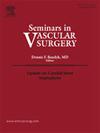血管外科教育的多样性、公平性和包容性
IF 2.4
3区 医学
Q1 PERIPHERAL VASCULAR DISEASE
引用次数: 0
摘要
在最高法院于2023年裁定反对基于种族的平权行动之后,医学教育多样性的下降加剧了现有的健康差距。随着医学院中代表性不足群体的入学率下降、住院医师的流失以及多样性、公平和包容(DEI)标准的差距,迫切需要努力解决医疗培训和患者护理方面的系统性不平等问题。血管外科在增加培训项目的多样性方面取得了重要进展,但要创造一个真正包容的环境,还有很多工作要做。虽然女性在血管外科领域的代表性有所增加,但在内科医生中代表性不足的比例却没有跟上。解决血管外科缺乏多样性的问题需要多管齐下的方法,重点是招聘、保留和创造一个包容性的学习和工作环境。建立一个包容的环境不仅仅是招聘;它需要培养一种文化,让所有的学员和教师都感到受到重视和倾听。通过有针对性的举措、对透明度的承诺以及对学术和临床环境的系统性改变,该领域可以在劳动力多样性方面取得实质性进展,从而解决差距问题。本文章由计算机程序翻译,如有差异,请以英文原文为准。
Diversity, equity, and inclusivity in vascular surgical education
The decline in diversity in medical education, following the Supreme Court’s 2023 ruling against race-based affirmative action, exacerbates existing health disparities. With decreasing enrollment of underrepresented groups in medical schools, residency attrition, and gaps in diversity, equity and inclusion (DEI) standards, urgent efforts are needed to address systemic inequities in medical training and patient care. Vascular surgery has made important progress in increasing diversity within its training programs, but there is still much work to be done to create a truly inclusive environment. While there has been growth in the representation of women within vascular surgery, the proportion of underrepresented in medicine (UriM) physicians has not kept pace. Addressing the lack of diversity in vascular surgery requires a multi-pronged approach focused on recruitment, retention, and the creation of an inclusive learning and work environment. Establishing an inclusive environment goes beyond recruitment; it requires fostering a culture where all trainees and faculty feel valued and heard. Through targeted initiatives, commitment to transparency, and systemic changes to academic and clinical environments, the field can make substantial strides in workforce diversity and in turn addressing disparities.
求助全文
通过发布文献求助,成功后即可免费获取论文全文。
去求助
来源期刊
CiteScore
3.50
自引率
4.00%
发文量
54
审稿时长
50 days
期刊介绍:
Each issue of Seminars in Vascular Surgery examines the latest thinking on a particular clinical problem and features new diagnostic and operative techniques. The journal allows practitioners to expand their capabilities and to keep pace with the most rapidly evolving areas of surgery.

 求助内容:
求助内容: 应助结果提醒方式:
应助结果提醒方式:


